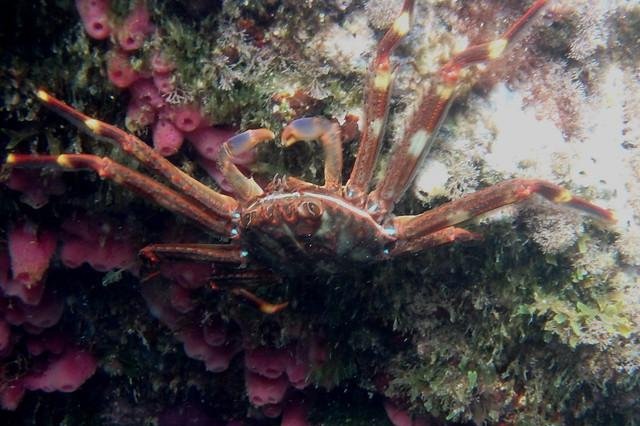Scientists discovered an invasive sally lightfoot crab on the hull of a boat in Malta. Photo by
Aylin Ulman
Sept. 25 (UPI) -- A new survey of private boats in marinas in the Mediterranean showed most are carrying species alien to the places they're moored or docked.
The Mediterranean Sea is a marine biodiversity hotspot, but it's also a magnet for alien species. Invertebrates begin spawning in early summer, around the same time recreational boaters head to the Mediterranean.
To better understand how alien species enter into and spread throughout the Mediterranean, scientists studied the hulls of private boats in 25 marinas across the Mediterranean, from France to Cyprus.
In addition to searching for evidence of alien species, scientists noted each boat's characteristics, home marina and travel history.
"Boats which have visited Eastern Mediterranean marinas had an especially high risk of spreading alien species due to the closer proximity to the Suez Canal, where most alien species enter the Mediterranean," lead study author Aylin Ulman, a researcher at the University of Pavia in Italy, said in a news release.
The survey -- detailed Wednesday in the Journal of Applied Ecology -- found the average boat in the Mediterranean is has spent more than two months traveling and stopped at at least 6 marinas. At least one non-indigenous species was found on 71 percent of the more than 600 boats tested.
Alien species were most likely to be found on ladders and propellers. And scientists found that even after boats had been professionally cleaned, alien species were quick to recolonize.
Scuba divers found alien annelids, molluscs, tunicates, crustaceans and bryozoans on the hulls, ladders and propellers of the surveyed boats. Alien species can disrupt ecosystems, threatening native biodiversity, and also harm aquaculture operations, causing economic damage.
According to one previous study, invasive species are the largest driver of animal and plant extinctions over the last five centuries.
Authors of the new study suggest more must be done to identify the boats and marinas that are most likely to host and aid the spread of harmful alien species.
"Longtime colleague Jasmine Ferrario at the University of Pavia is using this extensive dataset on alien species to build a model to identify high-risk marinas using environmental factors and marina characteristics. Some new marinas are now being sampled to validate the model," said researcher Aylin Ulman.















